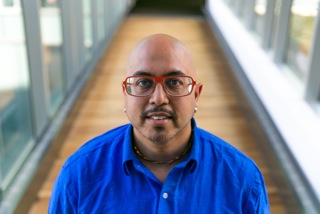Last July, Carnegie Mellon University in Pittsburgh, PA, announced that Google had granted it an initial round of $500,000 in funding to develop a robust platform to support Internet of Things (IoT) technologies. GIoTTO, the platform, will include sensors and middleware for app development, as well as security and privacy management. The university hopes to launch the first version of GIoTTO sometime this spring.

Anind Dey, project lead and director of CMU’s Human-Computer Interaction Institute “Essentially, what Google wanted us to do was build an open infrastructure for the Internet of Things,” explained Anind Dey, project lead and director of CMU’s Human-Computer Interaction Institute. “Lots of companies––including Google––have great technologies that can contribute to an Internet of Things ecology, but having one company that owned everything just didn’t seem to make sense.” After all, proprietary systems are limiting: “If you have to buy into all of one company’s products, it’s not going to work because people want to be able to pick and choose and combine products together to have the system they want.”
Dey relays that in conjunction the deployment of GIoTTO, CMU is making a considerable effort to engage potential users––namely students, staff, and faculty––with the goal of enhancing how each group does its work. “The students, I think, are most interested in learning more about it so that they can leverage it in their course work, [and] in their research,” Dey said. “The staff, I think, are probably more interested in how it can help them on a daily basis, and I think the faculty are interested primarily in how it can help them on a daily basis, but also how it could impact their research.”
At the classroom level, Dey believes that GIoTTO offers the potential for improved audiovisual experiences. “[There is] the use of sensing technology to detect changes in the environment, [where] you may want to change the audiovisual settings in a classroom, to detecting where people are in a classroom to change audiovisual settings, to even detecting: why is my projector not actually projecting on the screen?” he illustrated. This last use case can speed up troubleshooting, therefore decreasing help desk calls, he added. “Building on that, obviously we have tons of seminar rooms and other rooms that are meant for specific audiovisual needs, and you can imagine that putting additional sensing technology in those spaces would enable us to be more creative in understanding how those spaces get used, and how we can improve those spaces at the same time.”
Microphone manufacturer Shure Inc. in Niles, Ill., recently joined the Cisco Solution Partner Program, stepping up its efforts to address the Internet of Everything. As a result, Shure Microflex Wireless enterprise-class microphones will integrate within the Cisco infrastructure. “Customers gain the benefit of Shure wireless technology with the Cisco codec,” said Brian Hayes, senior design engineer at IVCi, an AV systems integration firm headquartered in Hauppauge, N.Y. “Customers gain the benefit of Shure wireless technology with the Cisco codec. Both products are rock solid and have proven themselves in applications ranging from small conference rooms to mobile carts, divisible spaces, and multipurpose room types.”

Daniel Jackson, manager of research and development at Crestron Electronics Inc Control systems manufacturers have been developing technologies of the IoT ilk long before the term “Internet of Things” was coined. “We put an Ethernet port on a control system and had it monitored by our software at the University of Wisconsin in 1997, so it’s been almost 20 years now that we’ve been doing the ‘Internet of Things,’” said Daniel Jackson, manager of research and development at Crestron Electronics Inc. in Rockleigh, N.J. The concept has simply evolved thanks to technological advancements combined with user demand for more sophisticated features, and he points to Crestron’s Fusion Enterprise Management Platform as an example.
“As we’re putting in different devices, we’re monitoring them, we’re managing them, we’re letting you know what’s going on with them, and we’re providing you remote access to them so that from a support and management perspective, these schools can be a lot more efficient and make the people who use the rooms feel a lot better because the stuff is always up and working,” Jackson said. And, back at the help desk, technicians can troubleshoot and solve problems without having to travel either across campus, or to a satellite location.
Jackson also points out that solutions like Fusion help tech managers gain an accurate depiction of space utilization, both in terms of how often a specific room is occupied, and how much the equipment in it is actually in use. “That’s important for people, because how do you really know if you made good spending decisions if you don’t know how much stuff is being used?” he said. “When you can track that, you can really get a better understanding of whether or not you’re making the right decisions.”

Michael Peveler, vice president of global education sales at AMX by Harman “The way we see it, the Internet of Things is really multiple devices that either have sensors or some type of communication with them that are coming back to a central hub, and that are being managed or monitored via a cloud-based application,” said Michael Peveler, vice president of global education sales at AMX in Richardson, TX. AMX has offered these capabilities for years, with the main difference being that its Resource Management Suite now runs in the cloud rather than on a server. “Today, we really see more of our customers continuing to do the same thing they’ve always done with the exception that the number of devices and the types of devices continue to change as we go forward.”
And herein lies the issue: when you’re managing 200 rooms, realistically, how much information about them can you process? “It’s a massive amount of energy, and in most cases, [tech managers] are struggling to have the resources just to manage what they have, much less the ever-changing environment as professors go, ‘oh, I could do this if I just had this connected,’” Peveler said. “Everything can be measured, so then the question is, what do you measure, how do you measure it, and how do you manage those constant changes?”
From an AV perspective, one of the challenges Dey foresees his team facing is getting AV-centric devices to play well with everything else that’s on the network. “I think it’s the huge set of protocols that each of the different players in this space uses––that’s probably one of the biggest things that we have to address,” he said. This is especially challenging because many AV infrastructures are closed systems, “so we either have to find partners that are willing to open those systems to interact with our infrastructure, or hopefully somebody’s found a way to put a wrapper around those systems so that we can use them.” Latency is another concern: “If it takes an extra half a second for my lights to turn on, that’s OK. But if it takes an extra half a second for my audio to catch up to the video, then that may be more of a problem. Trying to make sure that things are as reactive as possible is something we’re still looking at.”
One would hope that the IoT will serve to ease a number of burdens tech managers contend with, however at first, this may not be the case. “The amount of diversity in terms of devices that they look at is just going to explode,” Dey said. Not only will tech managers be tasked with managing traditional BYOD devices (phones, tablets, and laptops), but other consumer appliances users want to incorporate into campus life. “To bring an Amazon Echo onto the Carnegie Mello campus actually took a fair amount of doing. You just want to put everything on the secure wireless network and that’s not the way Echo works. So just dealing with small and simple things like that is going to be challenging due to the heterogeneity of the devices.” And speaking of security, Dey acknowledges that there is still a way’s to go. While end users are concerned with maintaining their privacy, tech managers are charged with locking down environments where, once again, the number of devices is increasing exponentially. Not only that, but they must keep things locked down while at the same time enabling systems to function in an efficient, meaningful way.
Dey says that when it comes to the IoT, there is a lot to be excited about, but he tempers his enthusiasm with some healthy skepticism. “People are calling it the next trillion-dollar industry, and so I think it’s really exciting. I do worry that there’s a huge danger of it falling off the curve in terms of too much promise and not enough delivery,” he said. One area that he believes shows great promise is the development of smart buildings and smart cities, because these applications will use a similar infrastructure to the one that is being developed at CMU. “But I also think that there’s got to be delivery on something that’s more than just an app and a device soon, or people are going to say, ‘wait. What are we spending all of these billions and trillions of dollars on?’”
Carolyn Heinze is a regular contributor to AV Technology.
INFO
AMX
www.amx.com
Carnegie Mellon University – Human-Computer Interaction Institute
www.hcii.cmu.edu
Crestron Electronics Inc.
www.crestron.com
IBM’s Watson Internet of Things
http://www.ibm.com/internet-of-things/
Shure Inc.
www.shure.com










